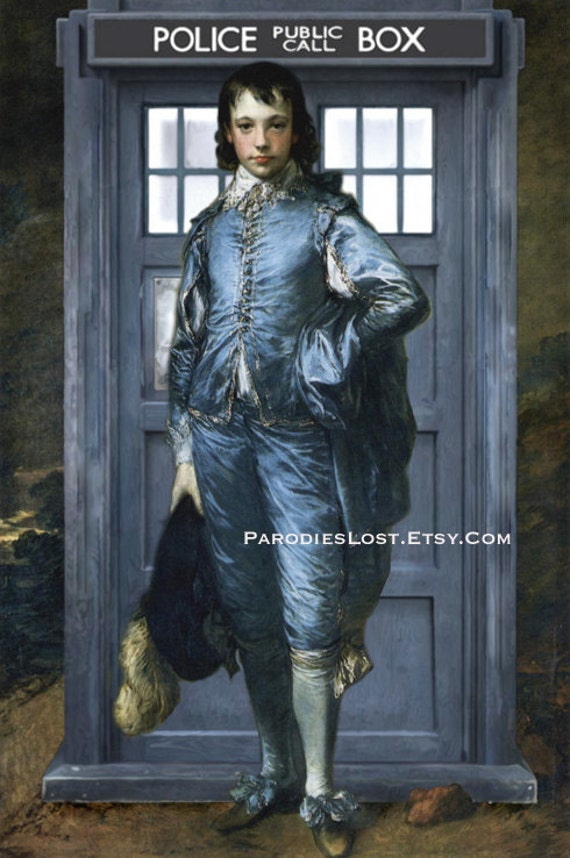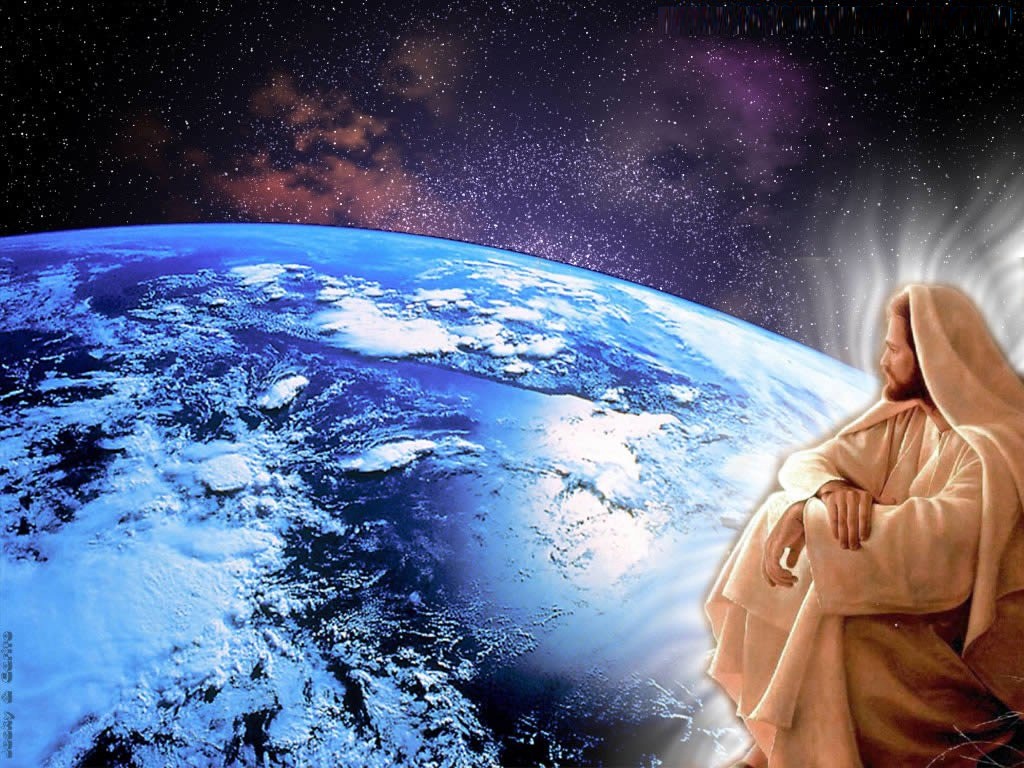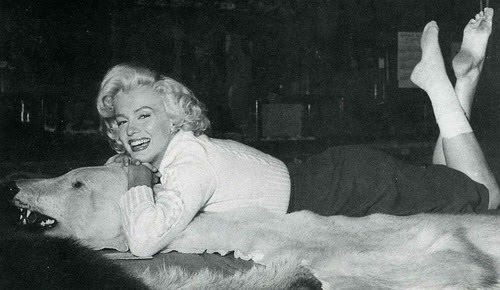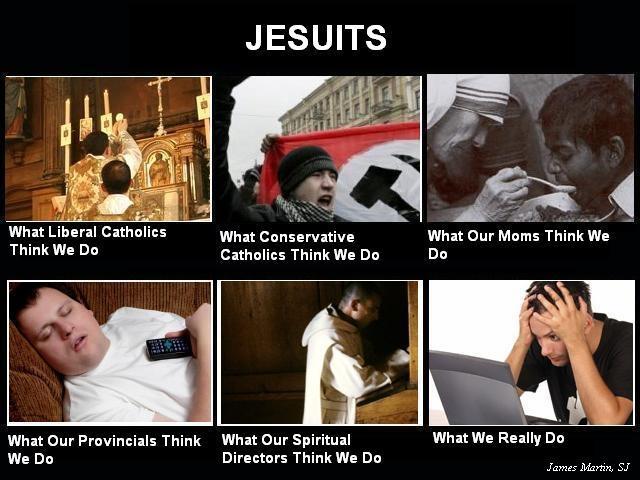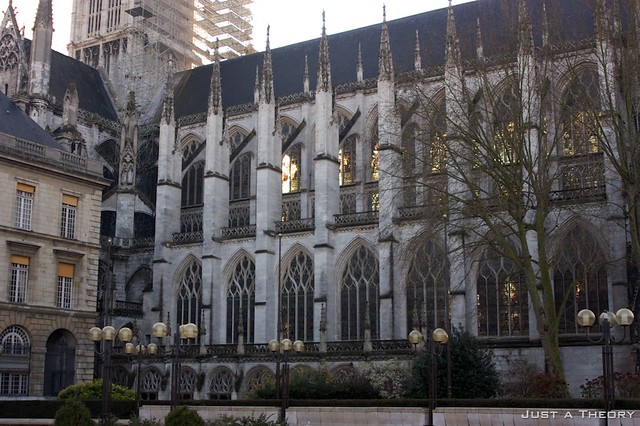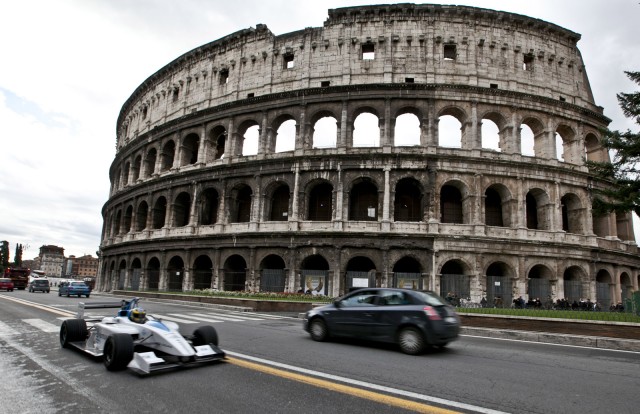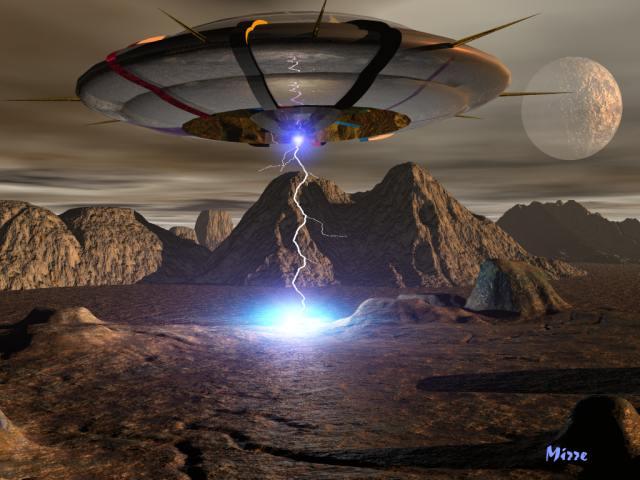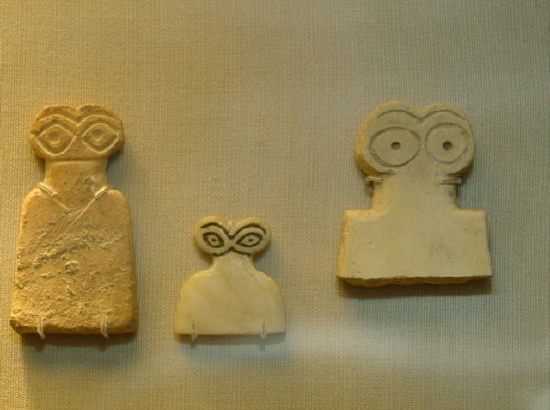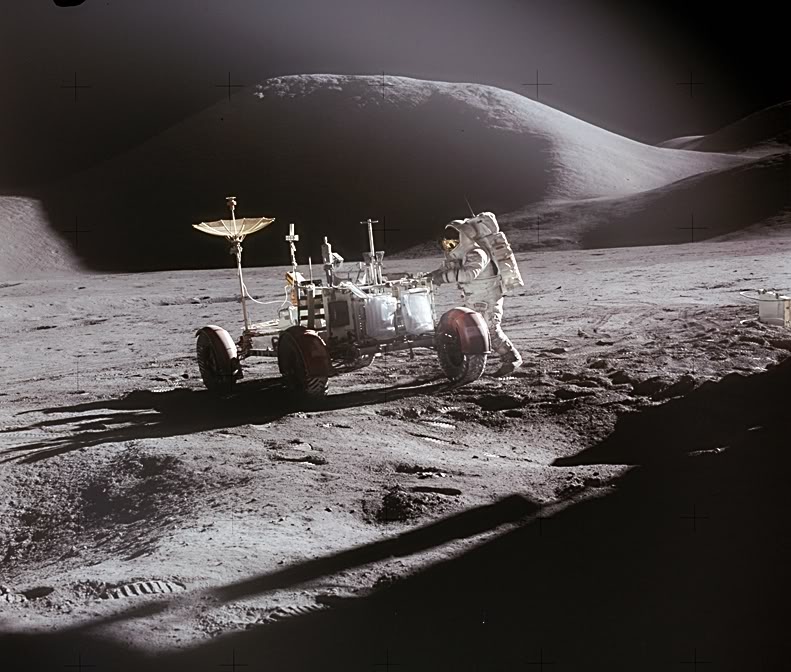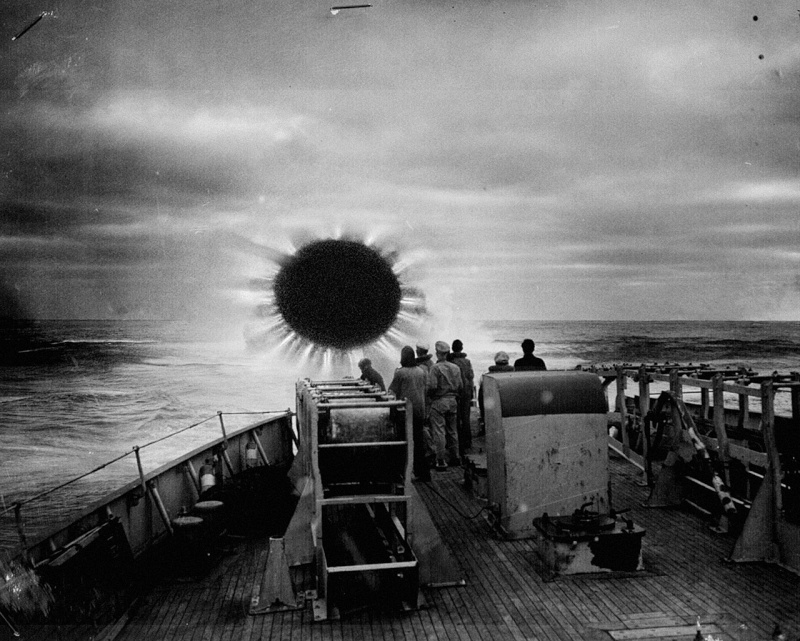Perhaps I should chuck my idealism -- and get real -- real fast. Why should I tell good people to be even better -- when those who are running the show have NO intention of playing nice and fair?? But really, if I were in their shoes, I might might be just like them. In fact, I might be even worse. If one wishes to be rich, famous, and powerful -- it seems as if one must bow-down and worship the God of This World -- keep up appearances -- and do exactly as instructed -- while remaining morally-ambiguous. Perhaps this is the way things have to be -- as reprehensible as this seems to me. If one is ordered to assist in bringing down skyscrapers in Lower Manhattan -- one just follows orders. Is this an extreme view -- or is this the way things really work?? BTW -- did 9/11 keep certain reforms from being implemented?? Will another "event" keep certain reforms from being implemented?? Did 9/11 prevent an even worse "event" from happening?? Was "god" trying to get our attention?? Did the perpetrators "do it for 'god'"?? I've joked about being near the center of things -- yet perhaps I wouldn't like the view from the Top of the Pyramid. Perhaps my place in the great scheme of things is to be a Dreamer of Dreams as a Completely Ignorant Fool. I wish I were joking. The following quotation is from Windswept House (1996) -- Pages 310-311 -- by Malachi Martin. It is fiction, and doesn't prove anything -- yet it made me think -- and sent chills up and down my spine.
"All I want," Cessi had reminded her financial advisor, "is enough coaching so that I won't sound too stupid when we walk into the Vatican Bank."
Roche made sure Cessi understood that the Vatican Bank was a real bank. The portfolio of the Institute for Religious Agencies, he told her, was right up there with the mijor financial institutions the world over. There was hardly any sector of human life in which the IRA hadn't invested Vatican funds.
Of course, Roche hastened to add, the fact that his bank was a real bank did not mean that the Pontiff was a real banker who micromanaged the financial affairs of the Vaticaan and the Holy See. Glenn had provided a fair rundown of key IRA personnel and the impressive scope of their operations, with detailed emphasis on the two men Cessi would be visiting, Dr. Pier Giorgio Maldonado and canny old Cardinal Amedeo Sanstefano, who, as head of the Prefecture of Economic Affairs, answered directly to the Holy Father for all economic and financial dealings of the Vatican, including those of the IRA.
Nonetheless, Glenn observed, the Pontiff had more control over the Institute of Religious Agencies than over most of the other Vatican ministries. The IRA, it seemed, had a special charter that couldn't be tampered with by anybody except the Pope. And that fact was basic to his independence of action, was the essential underpinning of his freedom from in-house constraints and external pressures.
All of that was simple enough for Cessi to grasp. But Glenn had insisted she see just what a major financial portfolio looked like these days. And that had required an excursion to a bleak building in midtown Manhaattan where they had been excorted by a trio of guards through a warren of locked rooms monitored at every turn by television scanners.
Finally, they had found themselves standing amid the components of a massive computer. "This is the brain that organizes and makes possible the globalized financial dealings of our brave new world." Roche bowed in mock politeness.
"This electronic doodad?" Glenn explained that something approaching a trillion dollars passed through this unthinking brain each day, a sum that was more than the entire money supply of the United States.
"Remember your shares in the Racol-Guardata Corporation, Cessi? Well, that's the outfit that makes this electronic doodad. These black boxes you see here and a pair of Unisys A-15J mainframe computers manage coded orders that come in through one hundred and thirty-four dedicated telephone lines from everybody who is anybody in the financial world, including the Gladstones."
"Including the Church of God?"
"Including the Pope's bank," Roche confirmed as he signaled the guards they were ready to leave.
Glenn's little crash course in world finance wasn't finished yet. Once back in his office at Glen Roche Securities, he pulled a thin volume from the bookshelves behind his desk and flicked its pages until he came to the passage he wanted to read aloud to Cessi. "'Since I entered politics'" -- Glenn settled into his chair as he read--"'I have chiefly had men's views confided to me privately. Some of the biggest men in the U.S., in the field of commerce and manufacturing, are afraid of somebody, are afraid of something. They know that there is a power somewhere so organized, so subtle, so watchful, so interlocked, so complete, so pervasive that they had better not speak above their breath when they speak in condemnation of it.'"
Roche snapped the little book shut. "Woodrow Wilson wrote those words in 1913."
Cessi got the point. Those black boxes and the Unisys A-15J were exactly what she had said. Electronic doodads. Somebody engineered them, programmed them, manipulated them. "So." She spoke softly as if to herself, or perhaps to her guardian angel. "The Devil is wired to the world at last."
Does Satan have an office at Goldman Sachs?? Is Satan the CEO of Solar Systems Unlimited?? Is Satan (in the preferred form) a nine-foot tall Draconian-Reptilian?? I don't write any of this to be mean. I write it because things might be a helluva lot different than what they taught us in Sabbath-School and Sunday-School. I just think we're going to find out about a helluva lot of upsetting information over the next decade or two. I'm trying to hint at what I think might be going on -- in a somewhat humorous and irreverent manner -- but most of the tripe I write is simply speculation. The Boys from Georgetown know a helluva lot more than I do.
I have NO idea what's really going on with this old Leo Zagami rant -- yet does it reveal at least some forbidden knowledge?? https://www.youtube.com/watch?v=6z7O7UZxipM As you must know by now -- I just take in a lot of the madness which is 'out there' -- and then I speculate and model -- in a very neutral and low-key manner. I have promised to keep this Tempest in a Teapot mostly within this website. I fully intend to keep this promise. I know too little -- the stakes are too high -- and I suspect the way things really are is worse than even I can imagine. I am very sluggish and debilitated -- even though I seem to be able to deal with the most upsetting and abstract information rather well. I can't seem to carry on a simple conversation -- even if my eternal life depended on it -- yet I can comprehend hidden aspects and concepts in the most scholarly books and lectures. This is all very strange. I seem to be able to write rather well -- yet preparing me for a press-conference would be nearly impossible. A teleprompter, drugs, rituals, perfect-possession, and a chip-implanted brain wouldn't even save me from Making a Completely Ignorant Fool Out of Myself on Live Network Television. I wish I were joking.
If God were made flesh, and dwelt among us -- would he and/or she feel comfortable with a United States of the Solar System?? If so, what role should they play in such a solar system?? Should they be the Chief Justice of the Supreme Court -- in Perpetuity?? I have NO idea -- but I think I might take a closer look at the Supreme Court -- in light of this, and other, questions and issues. Remember, this thread is HIGHLY experimental and tentative. This is a Test. This is Only a Test. I simply wish for things to improve. I am quite positive regarding this thread -- yet I am VERY negative regarding myself. Look closely at the thread -- but don't even bother to look at me -- and I'm being extremely serious.
http://en.wikipedia.org/wiki/Supreme_Court_of_the_United_States
History
The Supreme Court was organized on February 2, 1790.[4]
Marshall Court
Under Chief Justices Jay, Rutledge, and Ellsworth (1789–1801), the Court heard few cases; its first decision was West v. Barnes (1791), a case involving a procedural issue.[5] The Court lacked a home of its own and had little prestige,[6] a situation not helped by the highest-profile case of the era, Chisholm v. Georgia, which was immediately repudiated by the Eleventh Amendment.
The Court's power and prestige waxed during the Marshall Court (1801–1835).[7] Under Marshall, the Court established the principle of judicial review, including specifying itself as the supreme expositor of the Constitution (Marbury v. Madison)[8][9] and made several important constitutional rulings giving shape and substance to the balance of power between the federal government and the states (prominently, Martin v. Hunter's Lessee, McCulloch v. Maryland and Gibbons v. Ogden).[10][11][12][13]
The Marshall Court also ended the practice of each justice issuing his opinion seriatim,[14] a remnant of British tradition,[15] and instead issuing a single majority opinion.[14] Also during Marshall's tenure, although beyond the Court's control, the impeachment and acquittal of Justice Samuel Chase in 1804–1805 helped cement the principle of judicial independence.[16][17]
From Taney to Taft
The Taney Court (1836–1864) made several important rulings, such as Sheldon v. Sill, which held that while Congress may not limit the subjects the Supreme Court may hear, it may limit the jurisdiction of the lower federal courts to prevent them from hearing cases dealing with certain subjects.[18] Nevertheless, it is primarily remembered for its ruling in Dred Scott v. Sandford,[19] which may have helped precipitate the Civil War.[20] In the Reconstruction era, the Chase, Waite, and Fuller Courts (1864–1910) interpreted the new Civil War amendments to the Constitution[13] and developed the doctrine of substantive due process (Lochner v. New York;[21] Adair v. United States).[22]
Under the White and Taft Courts (1910–1930), the Court held that the Fourteenth Amendment had incorporated some guarantees of the Bill of Rights against the states (Gitlow v. New York),[23] grappled with the new antitrust statutes (Standard Oil Co. of New Jersey v. United States), upheld the constitutionality of military conscription (Selective Draft Law Cases)[24] and brought the substantive due process doctrine to its first apogee (Adkins v. Children's Hospital).[25]
The New Deal era
During the Hughes, Stone, and Vinson Courts (1930–1953), the Court gained its own accommodation in 1935[26] and changed its interpretation of the Constitution, giving a broader reading to the powers of the federal government to facilitate President Franklin Roosevelt's New Deal (most prominently West Coast Hotel Co. v. Parrish, Wickard v. Filburn, United States v. Darby and United States v. Butler).[27] [28][29] During World War II, the Court continued to favor government power, upholding the internment of Japanese citizens (Korematsu v. United States) and the mandatory pledge of allegiance (Minersville School District v. Gobitis). Nevertheless, Gobitis was soon repudiated (West Virginia State Board of Education v. Barnette), and the Steel Seizure Case restricted the pro-government trend.
Warren and Burger
The Warren Court (1953–1969) dramatically expanded the force of Constitutional civil liberties.[30] It held that segregation in public schools violates equal protection (Brown v. Board of Education, Bolling v. Sharpe and Green v. County School Bd.)[31] and that traditional legislative district boundaries violated the right to vote (Reynolds v. Sims). It created a general right to privacy (Griswold v. Connecticut),[32] limited the role of religion in public school (most prominently Engel v. Vitale and Abington School District v. Schempp),[33][34] incorporated most guarantees of the Bill of Rights against the States—prominently Mapp v. Ohio (the exclusionary rule) and Gideon v. Wainwright (right to appointed counsel),[35][36]—and required that criminal suspects be apprised of all these rights by police (Miranda v. Arizona);[37] At the same time, however, the Court limited defamation suits by public figures (New York Times v. Sullivan) and supplied the government with an unbroken run of antitrust victories.[38]
The Burger Court (1969–1986) expanded Griswold's right to privacy to strike down abortion laws (Roe v. Wade),[39] but divided deeply on affirmative action (Regents of the University of California v. Bakke)[40] and campaign finance regulation (Buckley v. Valeo),[41] and dithered on the death penalty, ruling first that most applications were defective (Furman v. Georgia),[42] then that the death penalty itself was not unconstitutional (Gregg v. Georgia).[42][43][44]
Rehnquist and Roberts
The Rehnquist Court (1986–2005) was noted for its revival of judicial enforcement of federalism,[45] emphasizing the limits of the Constitution's affirmative grants of power (United States v. Lopez) and the force of its restrictions on those powers (Seminole Tribe v. Florida, City of Boerne v. Flores).[46][47][48][49][50] It struck down single-sex state schools as a violation of equal protection (United States v. Virginia), laws against sodomy as violations of substantive due process (Lawrence v. Texas),[51] and the line item veto (Clinton v. New York), but upheld school vouchers (Zelman v. Simmons-Harris) and reaffirmed Roe's restrictions on abortion laws (Planned Parenthood v. Casey).[52] The Court's decision in Bush v. Gore, which ended the electoral recount during the presidential election of 2000, was controversial.[53][54]
The Roberts Court (2005–present) is regarded by some as more conservative than the Rehnquist Court.[55][56] Some of its major rulings have concerned federal preemption (Wyeth v. Levine), civil procedure (Twombly-Iqbal), abortion (Gonzales v. Carhart),[57] and the Bill of Rights, prominently Citizens United v. Federal Election Commission (First Amendment),[58] Heller-McDonald (Second Amendment),[59] and Baze v. Rees (Eighth Amendment).[60][61]
Composition
Article III of the United States Constitution leaves it to Congress to fix the number of justices. The Judiciary Act of 1789 called for the appointment of six justices, and as the nation's boundaries grew, Congress added justices to correspond with the growing number of judicial circuits: seven in 1807, nine in 1837, and ten in 1863.
In 1866, at the behest of Chief Justice Chase, Congress passed an act providing that the next three justices to retire would not be replaced, which would thin the bench to seven justices by attrition. Consequently, one seat was removed in 1866 and a second in 1867. In 1869, however, the Circuit Judges Act returned the number of justices to nine,[62] where it has since remained.
President Franklin D. Roosevelt attempted to expand the Court in 1937. His proposal envisioned appointment of one additional justice for each incumbent justice who reached the age of 70 years 6 months and refused retirement, up to a maximum bench of 15 justices. The proposal was ostensibly to ease the burden of the docket on elderly judges, but the actual purpose was widely understood as an effort to pack the Court with justices who would support Roosevelt's New Deal.[63] The plan, usually called the "Court-packing Plan", failed in Congress.[64] Nevertheless, the Court's balance began to shift within months when Justice van Devanter retired and was replaced by Senator Hugo Black. By the end of 1941, Roosevelt had appointed seven justices and elevated Harlan Fiske Stone to Chief Justice.[65]
Appointment and confirmation
The President of the United States appoints justices "by and with the advice and consent of the Senate."[66] Most presidents nominate candidates who broadly share their ideological views, although a justice's decisions may end up being contrary to a president's expectations. Because the Constitution sets no qualifications for service as a justice, a president may nominate anyone to serve, subject to Senate confirmation.
In modern times, the confirmation process has attracted considerable attention from the press and advocacy groups, which lobby senators to confirm or to reject a nominee depending on whether their track record aligns with the group's views. The Senate Judiciary Committee conducts hearings and votes on whether the nomination should go to the full Senate with a positive, negative or neutral report. The committee's practice of personally interviewing nominees is relatively recent. The first nominee to appear before the committee was Harlan Fiske Stone in 1925, who sought to quell concerns about his links to Wall Street, and the modern practice of questioning began with John Marshall Harlan II in 1955.[67] Once the committee reports out the nomination, the full Senate considers it. Rejections are relatively uncommon; the Senate has explicitly rejected twelve Supreme Court nominees, most recently Robert Bork in 1987.
Nevertheless, not every nominee has received a floor vote in the Senate. Although Senate rules do not necessarily allow a negative vote in committee to block a nomination, a nominee may be filibustered once debate has begun in the full Senate. No nomination for associate justice has ever been filibustered, but President Lyndon Johnson's nomination of sitting Associate Justice Abe Fortas to succeed Earl Warren as Chief Justice was successfully filibustered in 1968. A president may also withdraw a nominee's name before the actual confirmation vote occurs, typically because it is clear that the Senate will reject them, most recently Harriet Miers in 2006.
Once the Senate confirms a nomination, the president must prepare and sign a commission, to which the Seal of the Department of Justice must be affixed, before the new justice can take office.[68] The seniority of an associate justice is based on the commissioning date, not the confirmation or swearing-in date.[69]
Before 1981, the approval process of justices was usually rapid. From the Truman through Nixon administrations, justices were typically approved within one month. From the Reagan administration to the present, however, the process has taken much longer. Some believe this is because Congress sees justices as playing a more political role than in the past.[70]
Recess appointments
When the Senate is in recess, a president may make temporary appointments to fill vacancies. Recess appointees hold office only until the end of the next Senate session (at most, less than two years). The Senate must confirm the nominee for them to continue serving; of the two chief justices and six associate justices who have received recess appointments, only Chief Justice John Rutledge was not subsequently confirmed.
No president since Dwight D. Eisenhower has made a recess appointment to the Court, and the practice has become rare and controversial even in lower federal courts.[71] In 1960, after Eisenhower had made three such appointments, the Senate passed a "sense of the Senate" resolution that recess appointments to the Court should only be made in "unusual circumstances."[72] Such resolutions are not legally binding but are an expression of Congress's views in the hope of guiding executive action.[72][73]
Tenure
The Constitution provides that justices "shall hold their offices during good behavior" (unless appointed during a Senate recess). The term "good behavior" is understood to mean justices may serve for the remainder of their lives, unless they are impeached and convicted by Congress, resign or retire.[74] Only one justice has been impeached by the House of Representatives (Samuel Chase, March 1804), but he was acquitted in the Senate (March 1805).[75] Moves to impeach sitting justices have occurred more recently (for example, William O. Douglas was the subject of hearings twice, once in 1953 and again in 1970), but they did not reach a vote in the House. No mechanism exists for removing a justice who is permanently incapacitated by illness or injury, both unable to resign and unable to resume service.[76]
Because justices have indefinite tenure, timing of vacancies can be unpredictable. Sometimes vacancies arise in quick succession, as in the early 1970s when Lewis Franklin Powell, Jr. and William Rehnquist were nominated to replace Hugo Black and John Marshall Harlan II, who retired within a week of each other. Sometimes a great length of time passes between nominations such as the eleven years between Stephen Breyer's nomination in 1994 and the nomination of John Roberts in 2005 to fill the seat of Sandra Day O'Connor (though Roberts' nomination was withdrawn and resubmitted for the role of Chief Justice after Rehnquist died).
Despite the variability, all but four presidents have been able to appoint at least one justice. William Henry Harrison died a month after taking office, though his successor (John Tyler) made an appointment during that presidential term. Zachary Taylor likewise died early in his term, although his successor (Millard Fillmore) also made a Supreme Court nomination before the end of that term. Andrew Johnson, who succeeded to the presidency after the assassination of Abraham Lincoln, was denied the opportunity to appoint a justice by a contraction in the size of the Court. Jimmy Carter is the only president who completed at least one full term in office without making a nomination to the Court during his presidency.
Three presidents have appointed justices who collectively served more than 100 years: Franklin D. Roosevelt, Andrew Jackson and Abraham Lincoln.[77]
Current justices
John Roberts (Chief Justice) -- Circuit Judge, Court of Appeals for the D.C. Circuit (2003–2005); Private practice (1993–2003); Professor, Georgetown University Law Center (1992–2005); Principal Deputy Solicitor General (1989–1993); Private practice (1986–1989); Associate Counsel to the President (1982–1986); Special Assistant to the Attorney General (1981–1982)
Antonin Scalia -- Circuit Judge, Court of Appeals for the D.C. Circuit (1982–1986); Professor, University of Chicago Law School (1977–1982); Assistant Attorney General (1974–1977); Professor, University of Virginia School of Law (1967–1974); Private practice (1961–1967)
Anthony Kennedy -- Formerly Circuit Judge, Court of Appeals for the Ninth Circuit (1975–1988); Professor, McGeorge School of Law, University of the Pacific (1965–1988); Private practice (1963–1975)
Clarence Thomas -- Formerly Circuit Judge, Court of Appeals for the D.C. Circuit (1990–1991); Chairman, Equal Employment Opportunity Commission (1982–1990); legislative assistant for Missouri Senator John Danforth (1979–1981); employed by Monsanto Company Inc. (1977–1979); Assistant Attorney General in Missouri under State Attorney General John Danforth (1974–1977)
Ruth Bader Ginsburg -- Formerly Circuit Judge, Court of Appeals for the D.C. Circuit (1980–1993); General Counsel, American Civil Liberties Union (1973–1980); Professor, Columbia Law School (1972–1980); Professor, Rutgers University School of Law (1963–1972)
Stephen Breyer -- Formerly Chief Judge, Court of Appeals for the First Circuit (1990–1994); Circuit Judge, Court of Appeals for the First Circuit (1980–1990); Professor, Harvard Law School (1967–1980)
Samuel Alito -- Formerly Circuit Judge, Court of Appeals for the Third Circuit (1990–2006); Professor, Seton Hall University School of Law (1999–2004); U.S. Attorney for the District of New Jersey (1987–1990); Deputy Assistant Attorney General (1985–1987); Assistant to the Solicitor General (1981–1985); Assistant U.S. Attorney for the District of New Jersey (1977–1981)
Sonia Sotomayor -- Formerly Circuit Judge, Court of Appeals for the Second Circuit (1998–2009); District Judge, District Court for the Southern District of New York (1992–1998); Private practice (1984–1991); Assistant District Attorney, New York County, New York (1979–1984)
Elena Kagan -- Formerly Solicitor General of the United States (2009–2010); Dean of Harvard Law School (2003–2009); Professor, Harvard Law School (2001–2003); Visiting Professor, Harvard Law School (1999–2001); Associate White House Counsel (1995–1999); Deputy Director of the Domestic Policy Council (1995–1999); Professor, University of Chicago Law School (1995); Associate Professor, University of Chicago Law School (1991–1995)
Court demographics
The Court currently has six male and three female justices. One justice is African American, one is Latino, and two are Italian-Americans; six justices are Roman Catholics, and three are Jewish. The average age is 67 years, 4 months, and every current justice has an Ivy League background.[78] Four justices are from the state of New York, two from New Jersey, two from California, and one from Georgia.
In the 19th century, every justice was a male of European descent, and concerns about diversity focused on geography, to represent all regions of the country, rather than ethnic, religious, or gender diversity.[79] Thurgood Marshall became the first African American Justice in 1967, and Sandra Day O'Connor became the first female Justice in 1981. O'Connor, whose appointment fulfilled Ronald Reagan's campaign promise to place a woman on the Court, was later joined by Ruth Bader Ginsburg, appointed by Bill Clinton in 1993. Marshall was succeeded by Clarence Thomas in 1991, who is the second African American to serve on the Supreme Court. After O'Connor had in 2006 been succeeded by Samuel Alito, Ginsburg was in 2009 joined by Sonia Sotomayor, the first Latino justice, and in 2010 by Elena Kagan, so that there were three female justices.
Most justices have been Protestants, including thirty-five Episcopalians, nineteen Presbyterians, ten Unitarians, five Methodists, and three Baptists.[80][81] The first Catholic justice was Roger Taney in 1836, and 1916 saw the appointment of the first Jewish justice, Louis Brandeis. In recent years this situation has reversed: after the retirement of Justice Stevens in June 2010, the Court is without a Protestant for the first time in its history.[82]
Retired justices
There are currently three living retired justices of the Supreme Court of the United States: John Paul Stevens, Sandra Day O'Connor, and David Souter. As retired justices, they no longer participate in the work of the Supreme Court, but may be designated for temporary assignments to sit on lower federal courts, usually the United States Courts of Appeals. Such assignments are formally made by the Chief Justice, on request of the Chief Judge of the lower court and with the consent of the retired Justice. In recent years, Justice O'Connor has sat with several Courts of Appeals around the country, and Justice Souter has frequently sat on the First Circuit, the court of which he was briefly a member before joining the Supreme Court.
The status of a retired Justice is analogous to that of a Circuit or District Judge who has taken senior status, and eligibility of a Supreme Court Justice to assume retired status (rather than simply resign from the bench) is governed by the same age and service criteria.
Justices sometimes strategically plan their decisions to leave the bench, with personal, institutional, and partisan factors playing a role.[83][84] The fear of mental decline and death often motivates justices to step down. The desire to maximize the Court's strength and legitimacy through one retirement at a time, when the Court is in recess, and during non-presidential election years suggests a concern for institutional health. Finally, especially in recent decades, many justices have timed their departure to coincide with a compatible president holding office to ensure that a like-minded successor would be appointed.[85][86]
Seniority and seating
Many of the internal operations of the Court are organized by the seniority of the justices; the Chief Justice is considered the most senior member of the Court, regardless of the length of his or her service. The Associate Justices are then ranked by the length of their service.
During Court sessions, the justices sit according to seniority, with the Chief Justice in the center, and the Associate Justices on alternating sides, with the most senior Associate Justice on the Chief Justice's immediate right, and the most junior Associate Justice seated on the left farthest away from the Chief Justice. Therefore, the current court sits as follows from left to right when looking at the bench from the perspective of a lawyer arguing before the Court: Sotomayor, Breyer, Thomas, Scalia (most senior Associate Justice), Roberts (Chief Justice), Kennedy, Ginsburg, Alito, and Kagan. In the official yearly Court photograph, justices are arranged similarly, with the five most senior members sitting in the front row in the same order as they would sit during Court sessions (Thomas, Scalia, Roberts, Kennedy, Ginsburg), and the four most junior justices standing behind them, again in the same order as they would sit during Court sessions (Sotomayor, Breyer, Alito, Kagan).
In the justices' private conferences, the current practice is for them to speak and vote in order of seniority from the Chief Justice first to the most junior Associate Justice last. The most junior Associate Justice in these conferences is tasked with any menial labor the justices may require as they convene alone, such as answering the door of their conference room, serving coffee, and transmitting the orders of the Court to the court's clerk.[87] Justice Joseph Story served the longest as the junior justice, from February 3, 1812, to September 1, 1823, for a total of 4,228 days. Justice Stephen Breyer follows close behind, with 4,199 days when Samuel Alito joined the court on January 31, 2006.[88]
Salary
Main article: Federal judge salaries in the United States
For the years 2009 and 2010, associate justices were paid $213,900 and the chief justice $223,500.[89] Article III, Section 1 of the U.S. Constitution prohibits Congress from reducing the pay for incumbent justices. Once a justice meets age and service requirements, the justice may retire. Judicial pensions are based on the normal formula for federal employees, but a justice's pension will never be less than their salary at time of retirement. (The same procedure applies to judges of other federal courts.)
Judicial leanings
While justices do not represent or receive official endorsements from political parties, as is accepted practice in the legislative and executive branches, jurists are informally categorized in legal and political circles as being judicial conservatives, moderates, or liberals. Such leanings, however, generally refer to legal outlook rather than a political or legislative one.
As of the October 2012 term, the Court consists of five justices appointed by Republican presidents and four appointed by Democratic presidents. It is popularly accepted that Chief Justice Roberts and justices Scalia, Thomas, and Alito (appointed by Republican presidents) comprise the Court's conservative wing. Justices Ginsburg, Breyer, Sotomayor, and Kagan (appointed by Democratic presidents) comprise the Court's liberal wing. Justice Kennedy (appointed by President Reagan) is generally considered "a conservative who has occasionally voted with liberals",[90] and is often the swing vote that determines the outcome of close cases.[91][92][93]
Tom Goldstein argued in an article in SCOTUSblog in 2010, that the popular view of the Supreme Court as sharply divided along ideological lines and each side pushing an agenda at every turn is "in significant part a caricature designed to fit certain preconceptions." [94] He points out that in the 2009 term, almost half the cases were decided unanimously, and only about 20% were decided by a 5-to-4 vote. Barely one in ten cases involved the narrow liberal/conservative divide (fewer if the cases where Sotomayor recused herself are not included). He also pointed to several cases that defy the popular conception of the ideological lines of the Court.[95] Goldstein further argued that the large number of pro-criminal-defendant summary dismissals (usually cases where the justices decide that the lower courts significantly misapplied precedent and reverse the case without briefing or argument) are an illustration that the conservative justices have not been aggressively ideological. Likewise, Goldstein stated that the critique that the liberal justices are more likely to invalidate acts of Congress, show inadequate deference to the political process, and be disrespectful of precedent, also lacks merit: Thomas has most often called for overruling prior precedent (even if long standing) that he views as having been wrongly decided, and during the 2009 term Scalia and Thomas voted most often to invalidate legislation.
According to statistics compiled by SCOTUSblog, in the twelve terms from 2000 to 2011, an average of 19 of the opinions on major issues (22%) were decided by a 5–4 vote, with an average of 70% of those split opinions decided by a Court divided along the traditionally perceived ideological lines (about 15% of all opinions issued). Over that period, the conservative bloc has been in the majority about 62% of the time that the Court has divided along ideological lines, which represents about 44% of all the 5–4 decisions.[96]
In the October 2010 term, the Court decided 86 cases, including 75 signed opinions and 5 summary reversals (where the Court reverses a lower court without arguments and without issuing an opinion on the case).[97][98] Four were decided with unsigned opinions, two cases affirmed by an equally divided Court, and two cases were dismissed as improvidently granted. Justice Kagan recused herself from 26 of the cases due to her prior role as United States Solicitor General. Of the 80 cases, 38 (about 48%, the highest percentage since the October 2005 term) were decided unanimously (9–0 or 8–0), and 16 decisions were made by a 5–4 vote (about 20%, compared to 18% in the October 2009 term, and 29% in the October 2008 term).[99] However, in fourteen of the sixteen 5–4 decisions, the Court divided along the traditional ideological lines (with Ginsburg, Breyer, Sotomayor, and Kagan on the liberal side, and Roberts, Scalia, Thomas, and Alito on the conservative, and Kennedy providing the "swing vote"). This represents 87% of those 16 cases, the highest rate in the past 10 years. The conservative bloc, joined by Kennedy, formed the majority in 63% of the 5–4 decisions, the highest cohesion rate of that bloc in the Roberts court.[97][100][101][102][103]
In the October 2011 term, the Court decided 75 cases. Of these, 33 (about 44%) were decided unanimously, and 15 (about 20%, the same percentage as in the previous term) were decided by a vote of 5–4. Of the latter 15, the Court divided along the perceived ideological lines 10 times, with Justice Kennedy siding with the conservative justices (Roberts, Scalia, Thomas, and Alito) five times, and with the liberal justices (Ginsburg, Breyer, Sotomayor, and Kagan) five times.[96][104][105]
Politicization of the Court
Clerks hired by each of the justices of the Supreme Court are often given considerable leeway in the opinions they draft. "Supreme Court clerkship appeared to be a nonpartisan institution from the 1940s into the 1980s", according to a study published in 2009 by the law review of Vanderbilt University Law School.[106][107] "As law has moved closer to mere politics, political affiliations have naturally and predictably become proxies for the different political agendas that have been pressed in and through the courts", former federal court of appeals judge J. Michael Luttig said.[106] David J. Garrow, professor of history at the University of Cambridge, stated that the Court had thus begun to mirror the political branches of government. "We are getting a composition of the clerk workforce that is getting to be like the House of Representatives", Professor Garrow said. "Each side is putting forward only ideological purists."[106]
According to the Vanderbilt Law Review study, this politicized hiring trend reinforces the impression that the Supreme Court is "a superlegislature responding to ideological arguments rather than a legal institution responding to concerns grounded in the rule of law."[106]
A poll conducted in June 2012 by The New York Times and CBS News showed that just 44 percent of Americans approve of the job the Supreme Court is doing. Three-quarters said the justices' decisions are sometimes influenced by their political or personal views.[108]
Facilities
The Supreme Court first met on February 1, 1790, at the Merchants' Exchange Building in New York City. When Philadelphia became the capital, the Court met briefly in Independence Hall before settling in Old City Hall from 1791 until 1800. After the government moved to Washington, D.C., the Court occupied various spaces in the United States Capitol building until 1935, when it moved into its own purpose-built home. The four-story building was designed by Cass Gilbert in a classical style sympathetic to the surrounding buildings of the Capitol and Library of Congress, and is clad in marble. The building includes the courtroom, justices' chambers, an extensive law library, various meeting spaces, and auxiliary services including a gymnasium. The Supreme Court building is within the ambit of the Architect of the Capitol, but maintains its own police force separate from the Capitol Police.[109]
Located across the street from the United States Capitol at One First Street NE and Maryland Avenue,[110][111] the building is open to the public from 9 am to 4:30 pm weekdays but closed on weekends and holidays.[110] Visitors may not tour the actual courtroom unaccompanied. There is a cafeteria, a gift shop, exhibits, and a half-hour informational film.[109] When the Court is not in session, lectures about the courtroom are held hourly from 9:30 am to 3:30 pm and reservations are not necessary.[109] When the Court is in session the public may attend oral arguments, which are held twice each morning (and sometimes afternoons) on Mondays, Tuesdays, and Wednesdays in two-week intervals from October through late April, with breaks during December and February. Visitors are seated on a first-come first-served basis. One estimate is there are about 250 seats available.[112] The number of open seats varies from case to case; for important cases, some visitors arrive the day before and wait through the night. From mid-May until the end of June, the court releases orders and opinions beginning at 10 am, and these 15 to 30-minute sessions are open to the public on a similar basis.[109] Supreme Court Police are available to answer questions.[110]
Jurisdiction
Procedures of the Supreme Court of the United States
Section 2 of Article Three of the United States Constitution outlines the jurisdiction of the federal courts of the United States:
The judicial Power shall extend to all Cases, in Law and Equity, arising under this Constitution, the Laws of the United States, and Treaties made, or which shall be made, under their Authority; to all Cases affecting Ambassadors, other public Ministers and Consuls; to all Cases of admiralty and maritime Jurisdiction; to Controversies to which the United States shall be a Party; to Controversies between two or more States; between a State and Citizens of another State; between Citizens of different States; between Citizens of the same State claiming Lands under Grants of different States, and between a State, or the Citizens thereof, and foreign States, Citizens or Subjects.
The jurisdiction of the federal courts was further limited by the Eleventh Amendment to the United States Constitution, which forbade federal courts from hearing cases "commenced or prosecuted against [a State] by Citizens of another State, or by Citizens or Subjects of any Foreign State." However, states may waive this immunity, and Congress may abrogate the states' immunity in certain circumstances (see Sovereign immunity). In addition to constitutional constraints, Congress is authorized by Article III to regulate the court's appellate jurisdiction: for example, the federal courts may hear cases only if one or more of the following conditions are met:
1.If there is diversity of citizenship (meaning, the parties are citizens of different states or countries, including foreign states[113]), and the amount of damages exceeds $75,000.[114]
2.If the case presents a federal question, meaning that it involves a claim or issue "arising under the Constitution, laws, or treaties of the United States".[115]
3.If the United States federal government (including the Post Office[116]) is a party in the case.[117][118]
Exercise of this power can become controversial (see jurisdiction stripping). For example, 28 U.S.C. § 2241(e)(1), as amended by the Detainee Treatment Act, provides that "No court, justice, or judge shall have jurisdiction to hear or consider an application for a writ of habeas corpus filed by or on behalf of an alien detained by the United States who has been determined by the United States to have been properly detained as an enemy combatant or is awaiting such determination."
The Constitution specifies that the Supreme Court may exercise original jurisdiction in cases affecting ambassadors and other diplomats, and in cases in which a state is a party. In all other cases, however, the Court has only appellate jurisdiction. It considers cases based on its original jurisdiction very rarely; almost all cases are brought to the Supreme Court on appeal. In practice, the only original jurisdiction cases heard by the Court are disputes between two or more states.
The power of the Supreme Court to consider appeals from state courts, rather than just federal courts, was created by the Judiciary Act of 1789 and upheld early in the Court's history, by its rulings in Martin v. Hunter's Lessee (1816) and Cohens v. Virginia (1821). The Supreme Court is the only federal court that has jurisdiction over direct appeals from state court decisions, although there are several devices that permit so-called "collateral review" of state cases.
Since Article Three of the United States Constitution stipulates that federal courts may only entertain "cases" or "controversies", the Supreme Court avoids deciding cases that are moot and does not render advisory opinions, as the supreme courts of some states may do. For example, in DeFunis v. Odegaard, 416 U.S. 312 (1974), the Court dismissed a lawsuit challenging the constitutionality of a law school affirmative action policy because the plaintiff student had graduated since he began the lawsuit, and a decision from the Court on his claim would not be able to redress any injury he had suffered. The mootness exception is not absolute. If an issue is "capable of repetition yet evading review", the Court will address it even though the party before the Court would not himself be made whole by a favorable result. In Roe v. Wade, 410 U.S. 113 (1973), and other abortion cases, the Court addresses the merits of claims pressed by pregnant women seeking abortions even if they are no longer pregnant because it takes longer than the typical human gestation period to appeal a case through the lower courts to the Supreme Court.
Justices as Circuit Justices
The United States is divided into thirteen circuit courts of appeals, each of which is assigned a "Circuit Justice" from the Supreme Court. Although this concept has been in continuous existence throughout the history of the republic, its meaning has changed through time.
Under the Judiciary Act of 1789, each Justice was required to "ride circuit", or to travel within the assigned circuit and consider cases alongside local judges. This practice encountered opposition from many Justices, who cited the difficulty of travel. Moreover, several individuals opposed it because a Justice could not be expected to be impartial in an appeal if he had previously decided the same case while riding circuit. Circuit riding was abolished in 1891.
Today, the Circuit Justice for each circuit is responsible for dealing with certain types of applications that, under the Court's rules, may be addressed by a single Justice. These include applications for emergency stays (including stays of execution in death-penalty cases) and injunctions pursuant to the All Writs Act arising from cases within that circuit, as well as routine requests such as requests for extensions of time. In the past, Circuit Justices also sometimes ruled on motions for bail in criminal cases, writs of habeas corpus, and applications for writs of error granting permission to appeal. Ordinarily, a Justice will resolve such an application by simply endorsing it "Granted" or "Denied" or entering a standard form of order. However, the Justice may elect to write an opinion—referred to as an in-chambers opinion—in such matters if he or she wishes.
A Circuit Justice may sit as a judge on the Court of Appeals of that circuit, but over the past hundred years, this has rarely occurred. A Circuit Justice sitting with the Court of Appeals has seniority over the Chief Judge of the circuit.
The Chief Justice has traditionally been assigned to the District of Columbia Circuit, the Fourth Circuit (which includes Maryland and Virginia, the states surrounding the District of Columbia), and since it was established, the Federal Circuit. Each Associate Justice is assigned to one or two judicial circuits.
As of September 28, 2010, the allotment of the justices among the circuits is:[119]
District of Columbia Circuit -- Chief Justice Roberts
First Circuit -- Justice Breyer
Second Circuit -- Justice Ginsburg
Third Circuit -- Justice Alito
Fourth Circuit -- Chief Justice Roberts
Fifth Circuit -- Justice Scalia
Sixth Circuit -- Justice Kagan
Seventh Circuit -- Justice Kagan
Eighth Circuit -- Justice Alito
Ninth Circuit -- Justice Kennedy
Tenth Circuit -- Justice Sotomayor
Eleventh Circuit -- Justice Thomas
Federal Circuit -- Chief Justice Roberts
Four of the current Justices are assigned to circuits on which they previously sat as circuit judges: Chief Justice Roberts (D.C. Circuit), Justice Breyer (First Circuit), Justice Alito (Third Circuit), and Justice Kennedy (Ninth Circuit).
Procedures of the Supreme Court of the United States
A term of the Supreme Court commences on the first Monday of each October, and continues until June or early July of the following year. Each term consists of alternating periods of approximately two weeks known as "sittings" and "recesses." Justices hear cases and deliver rulings during sittings; they discuss cases and write opinions during recesses.
Case selection
Nearly all cases come before the court by way of petitions for writs of certiorari, commonly referred to as "cert". The Court may review any case in the federal courts of appeals "by writ of certiorari granted upon the petition of any party to any civil or criminal case".[120] The Court may only review "final judgments rendered by the highest court of a state in which a decision could be had" if those judgments involve a question of federal statutory or constitutional law.[121] The party that lost in the lower court is the petitioner and the party that prevailed is the respondent. All case names before the Court are styled petitioner v. respondent, regardless of which party initiated the lawsuit in the trial court. For example, criminal prosecutions are brought in the name of the state and against an individual, as in State of Arizona v. Ernesto Miranda. If the defendant is convicted, and his conviction then is affirmed on appeal in the state supreme court, when he petitions for cert the name of the case becomes Miranda v. Arizona.
There are situations where the Court has original jurisdiction, such as when two states have a dispute against each other, or when there is a dispute between the United States and a state. In such instances, a case is filed with the Supreme Court directly. Examples of such cases include United States v. Texas, a case to determine whether a parcel of land belonged to the United States or to Texas, and Virginia v. Tennessee, a case turning on whether an incorrectly drawn boundary between two states can be changed by a state court, and whether the setting of the correct boundary requires Congressional approval. Although it has not happened since 1794 in the case of Georgia v. Brailsford,[122] parties in an action at law in which the Supreme Court has original jurisdiction may request that a jury determine issues of fact.[123] Two other original jurisdiction cases involve colonial era borders and rights under navigable waters in New Jersey v. Delaware, and water rights between riparian states upstream of navigable waters in Kansas v. Colorado.
The common shorthand name for cases is typically the first party (the petitioner). For example, Brown v. Board of Education is referred to simply as Brown, and Roe v. Wade as Roe. The exception to this rule is when the name of a state, or the United States, or some government entity, is the first listed party. In that instance, the name of the second party is the shorthand name. For example, Iowa v. Tovar is referred to simply as Tovar, and Gonzales v. Raich is referred to simply as Raich, because the first party, Alberto Gonzales, was sued in his official capacity as the United States Attorney General.
A cert petition is voted on at a session of the court called a conference. A conference is a private meeting of the nine Justices by themselves; the public and the Justices' clerks are excluded. If four Justices vote to grant the petition, the case proceeds to the briefing stage; otherwise, the case ends. Except in death penalty cases and other cases in which the Court orders briefing from the respondent, the respondent may, but is not required to, file a response to the cert petition.
The court grants a petition for cert only for "compelling reasons", spelled out in the court's Rule 10. Such reasons include:
Resolving a conflict in the interpretation of a federal law or a provision of the federal Constitution
Correcting an egregious departure from the accepted and usual course of judicial proceedings
Resolving an important question of federal law, or to expressly review a decision of a lower court that conflicts directly with a previous decision of the Court.
When a conflict of interpretations arises from differing interpretations of the same law or constitutional provision issued by different federal circuit courts of appeals, lawyers call this situation a "circuit split". If the court votes to deny a cert petition, as it does in the vast majority of such petitions that come before it, it does so typically without comment. A denial of a cert petition is not a judgment on the merits of a case, and the decision of the lower court stands as the final ruling in the case.
To manage the high volume of cert petitions received by the Court each year (of the more than 7,000 petitions the Court receives each year, it will usually request briefing and hear oral argument in 100 or fewer), the Court employs an internal case management tool known as the "cert pool." Currently, all justices except for Justice Alito participate in the cert pool.[124][125][126]
Oral argument
When the Court grants a cert petition, the case is set for oral argument. Both parties will file briefs on the merits of the case, as distinct from the reasons they may have argued for granting or denying the cert petition. With the consent of the parties or approval of the Court, amici curiae, or "friends of the court", may also file briefs. The Court holds two-week oral argument sessions each month from October through April. Each side has thirty minutes to present its argument (the Court may choose to give more time, though this is rare[127] ), and during that time, the Justices may interrupt the advocate and ask questions. The petitioner gives the first presentation, and may reserve some time to rebut the respondent's arguments after the respondent has concluded. Amici curiae may also present oral argument on behalf of one party if that party agrees. The Court advises counsel to assume that the Justices are familiar with and have read the briefs filed in a case.
The Supreme Court Bar
In order to plead before the court, an attorney must first be admitted to the court's bar. Approximately 4,000 lawyers join the bar each year. The bar contains an estimated 230,000 members. In reality, pleading is limited to several hundred attorneys. The rest join for a one-time fee of $200, earning the court about $750,000 annually. The lawyers mostly apply for the trophy of a certificate for their office, an addition for their resume, and access to better seating if they wish to attend an oral argument.[128]
Decision
At the conclusion of oral argument, the case is submitted for decision. Cases are decided by majority vote of the Justices. It is the Court's practice to issue decisions in all cases argued in a particular Term by the end of that Term. Within that Term, however, the Court is under no obligation to release a decision within any set time after oral argument. At the conclusion of oral argument, the Justices retire to another conference at which the preliminary votes are tallied, and the most senior Justice in the majority assigns the initial draft of the Court's opinion to a Justice on his or her side. Drafts of the Court's opinion, as well as any concurring or dissenting opinions,[129] circulate among the Justices until the Court is prepared to announce the judgment in a particular case.
It is possible that, through recusals or vacancies, the Court divides evenly on a case. If that occurs, then the decision of the court below is affirmed, but does not establish binding precedent. In effect, it results in a return to the status quo ante. For a case to be heard, there must be a quorum of at least six justices.[130] If a quorum is not available to hear a case and a majority of qualified justices believes that the case cannot be heard and determined in the next term, then the judgment of the court below is affirmed as if the Court had been evenly divided. For cases brought directly to the Supreme Court by direct appeal from a United States District Court, the Chief Justice may order the case remanded to the appropriate U.S. Court of Appeals for a final decision there.[131] This has only occurred once in U.S. history, in the case of United States v. Alcoa.[132]
Published opinions
The Court's opinions are published in three stages. First, a slip opinion is made available on the Court's web site and through other outlets. Next, several opinions are bound together in paperback form, called a preliminary print of United States Reports, the official series of books in which the final version of the Court's opinions appears. About a year after the preliminary prints are issued, a final bound volume of U.S. Reports is issued. The individual volumes of U.S. Reports are numbered so that users may cite this set of reports—or a competing version published by another commercial legal publisher—to allow those who read their pleadings and other briefs to find the cases quickly and easily.
As of March 2012, there are 566 volumes of U.S. Reports. Lawyers use an abbreviated format to cite cases, in the form vvv U.S. ppp (yyyy). The number before the "U.S." refers to the volume number, and the number after the U.S. refers to the page within that volume. The number in parentheses is the year in which the case was decided. For instance, the citation for Roe v. Wade is 410 U.S. 113 (1973) and it means the case was decided in 1973 and appears on page 113 of volume 410 of U.S. Reports. For hot-from-the-press judgments, the volume and page numbers are replaced with "___". As of March 2012, the U.S. Reports have published a total of 30,161 Supreme Court opinions, covering the decisions handed down from February 1790 to March 2012. This figure does not reflect the number of cases the Court has taken up, as several cases can be addressed by a single opinion (see, for example, Parents v. Seattle, where Meredith v. Jefferson County Board of Education was also decided in the same opinion). A more unusual example is The Telephone Cases, which comprise a single opinion that takes up the entire 126th volume of the U.S. Reports.
Opinions are also collected and published in two unofficial, parallel reporters: Supreme Court Reporter, published by West (now a part of Thomson Reuters), and United States Supreme Court Reports, Lawyers' Edition (simply known as Lawyers' Edition), published by LexisNexis. In court documents, legal periodicals, and other legal media, case citations generally contain the cites from each of the three reporters; for example, the citation to Citizens United v. Federal Election Commission is presented as Citizens United v. Federal Election Com'n, 585 U.S. 50, 130 S. Ct. 876, 175 L. Ed. 2d 753 (2010), with "S. Ct." representing the Supreme Court Reporter, and "L. Ed." representing the Lawyers' Edition.[133][134]
Institutional powers and constraints
The Constitution does not explicitly grant the Supreme Court the power of judicial review; nevertheless, the power of this Court to overturn laws and executive actions it deems unlawful or unconstitutional is a well-established precedent. Many of the Founding Fathers accepted the notion of judicial review; in Federalist No. 78, Alexander Hamilton wrote: "A Constitution is, in fact, and must be regarded by the judges, as a fundamental law. It therefore belongs to them to ascertain its meaning, as well as the meaning of any particular act proceeding from the legislative body. If there should happen to be an irreconcilable variance between the two, that which has the superior obligation and validity ought, of course, to be preferred; or, in other words, the Constitution ought to be preferred to the statute." The Supreme Court first established its power to declare laws unconstitutional in Marbury v. Madison (1803), consummating the system of checks and balances. This power allows judges to have the last word on allocation of authority among the three branches of the federal government, which grants them the ability to set bounds to their own authority, as well as to their immunity from outside checks and balances.
The Supreme Court cannot directly enforce its rulings; instead, it relies on respect for the Constitution and for the law for adherence to its judgments. One notable instance of nonacquiescence came in 1832, when the state of Georgia ignored the Supreme Court's decision in Worcester v. Georgia. President Andrew Jackson, who sided with the Georgia courts, is supposed to have remarked, "John Marshall has made his decision; now let him enforce it!";[135] however, this alleged quotation has been disputed. Some state governments in the South also resisted the desegregation of public schools after the 1954 judgment Brown v. Board of Education. More recently, many feared that President Nixon would refuse to comply with the Court's order in United States v. Nixon (1974) to surrender the Watergate tapes. Nixon, however, ultimately complied with the Supreme Court's ruling.
Some argue that the Supreme Court is "the most separated and least checked of all branches of government."[136] Justices are not required to stand for election by virtue of their tenure "during good behavior", and their pay may "not be diminished" while they hold their position (Section 1 of Article Three). Though subject to the process of impeachment, only one Justice has ever been impeached and no Supreme Court Justice has been removed from office. Supreme Court decisions have been purposefully overridden by constitutional amendment in only four instances: the Eleventh Amendment overturned Chisholm v. Georgia (1793); the Thirteenth and Fourteenth Amendments in effect overturned Dred Scott v. Sandford (1857); the Sixteenth Amendment reversed Pollock v. Farmers' Loan and Trust Co. (1895); and the Twenty-sixth Amendment overturned some portions of Oregon v. Mitchell (1970). However, when the Court rules on matters involving the interpretation of laws rather than of the Constitution, simple legislative action can reverse the decisions (for example, in 2009 Congress passed the Lilly Ledbetter act, superseding the limitations given in Ledbetter v. Goodyear Tire & Rubber Co. in 2007). Also, the Supreme Court is not immune from political and institutional restraints: lower federal courts and state courts sometimes resist doctrinal innovations, as do law enforcement officials.[137]
In addition, the other two branches can restrain the Court through other mechanisms. Congress can increase the number of justices, giving the President power to influence future decisions by appointments (as in Roosevelt's Court Packing Plan discussed above). Congress can pass legislation that restricts the jurisdiction of the Supreme Court and other federal courts over certain topics and cases: this is suggested by language in Section 2 of Article Three, where the appellate jurisdiction is granted "with such Exceptions, and under such Regulations as the Congress shall make." The Court sanctioned such congressional action in the Reconstruction case ex parte McCardle (1869), though it rejected Congress' power to dictate how particular cases must be decided in United States v. Klein (1871).
On the other hand, through its power of judicial review, the Supreme Court has defined the scope and nature of the powers and separation between the legislative and executive branches of the federal government; for example, in United States v. Curtiss-Wright Export Corp. (1936), Dames & Moore v. Regan (1981), and notably in Goldwater v. Carter (1979), (where it effectively gave the Presidency the power to terminate ratified treaties without the consent of Congress or the Senate). The Court's decisions can also impose limitations on the scope of Executive authority, as in Humphrey's Executor v. United States (1935), the Steel Seizure Case (1952), and United States v. Nixon (1974).











